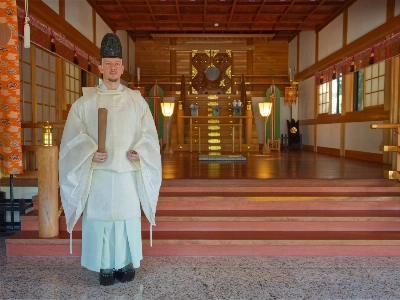Before we get too far from the holidays, I wonder how many of you were aware of yet another dilemma for Japanese trying to follow traditions in a world where they no longer fit. Among the most spectacular sights of Golden Week that we are suppose to see are the carp streamers hoisted on long poles and swimming in the winds to honor boys on their day. Supposedly they represent the number of boys in the household, but this rule is not enforced and there can be exaggeration and/or misinterpretation. Still, carp are symbolic of masculine strength because they can swim upstream. I have seen some beautiful kakemono with carp even swimming up waterfalls, all very spiritual. Check just about any postcard rack for a picture of a thatched roofed farmhouse with several brightly colored carp banners two or more meters long, open-mouthed, catching the wind and swimming in great style.
However, there are few big farmhouses in Tokyo, and the poor carp have a sorry time of it doing their thing in modern surroundings. I saw some huge ones hanging from a cable stretched across a small school playground. Two had become entangled in the cable and the others hung limply just above the ground, a dismal sight. However, I found the apartment house fronts to be the most eye-catching. In an earlier day they were splashed with the bright colors of futon and umbrellas being dried in the sunshine. This year many of the apartment buildings had miniature sets of carp flying from their balconies. Not the great fish of yesteryears but more like minnows caught on a string. Of course it is the symbolism that matters. Then, too, they could be representative of some of today's young men I occasionally see outfitted in their Harajuku designer clothes and their carefully arranged hairstyles as they pause in front of a store to check their reflection in the window and perhaps adjust an eyebrow with a moistened fingertip.
In last Sunday's column, we discussed the availability of experts in the fields of taiko, or drums (Kenny Endo), piano tuning (Jim Ediger) and pottery making (Tom Morris). Today you will learn of a wood refinisher/furniture repairer (Richard Morgan). I met Richard when he worked with antique shop owner Kathryn Milan, and watched him do some remarkable work restoring damaged furnishings both for Kathryn and for her customers. Now, with Kathryn in California, he has more time to freelance as an independent wood worker. After seven years working for a bank and then British Gas, Richard came to Japan as a DJ, his longtime hobby. He spent several years working the clubs and then decided to get a "real" job again.


















With your current subscription plan you can comment on stories. However, before writing your first comment, please create a display name in the Profile section of your subscriber account page.